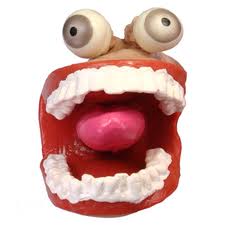Ultrastructural and immunocytochemical investigations reveal that a third major filamentous structure is present in eukaryotic cells. In addition to the thin (actin) and thick (myosin) filaments, cells contain a class of intermediate-sized filaments with an average diameter of 10–12 nm (Figure 2–37 and Table 2–4). Several proteins that form intermediate filaments have been isolated and localized by immunocytochemical means.
Figure 2-37
Electron micrograph of a skin epithelial cell showing intermediate filaments of keratin associated with desmosomes.
| Table 2–4. Examples of Intermediate Filaments Found in Eukaryotic Cells. |
|
| Filament Type | Cell Type | Examples |
| Keratins | Epithelium | Both keratinizing and nonkeratinizing epithelia |
| Vimentin | Mesenchymal cells | Fibroblasts, chondroblasts, macrophages, endothelial cells, vascular smooth muscle |
| Desmin | Muscle | Striated and smooth muscle (except vascular smooth muscle) |
| Gilial fibrillary acidic proteins | Glial cells | Astrocytes |
| Neurofilaments | Neurons | Nerve cell body and processes |
|
|
Keratins (Gr. keras, horn) are a family of approximately 20 proteins found in epithelia. They are encoded by a family of genes and have different chemical and immunological properties. This diversity of keratin is related to the various roles these proteins play in the epidermis, nails, hooves, horns, feathers, scales, and the like that provide animals with defense against abrasion and loss of water and heat.
Vimentin filaments are characteristic of cells of mesenchymal origin. (Mesenchyme is an embryonic tissue.) Vimentin is a single protein (56–58 kDa) and may copolymerize with desmin or glial fibrillary acidic protein.
Desmin (skeletin) is found in smooth muscle and in the Z disks of skeletal and cardiac muscle (53–55 kDa).
Glial filaments (glial fibrillary acidic protein) are characteristic of astrocytes but are not found in neurons, muscle, mesenchymal cells, or epithelia (51 kDa).
Neurofilaments consist of at least three high-molecular-weight polypeptides (68, 140, and 210 kDa). Intermediate filament proteins have different chemical structures and different roles in cellular function.
Medical Application
The presence of a specific type of intermediate filament in tumors can reveal which cell originated the tumor, information important for diagnosis and treatment (see Table 1–1). Identification of intermediate filament proteins by means of immunocytochemical methods is a routine procedure.
References
Afzelius BA, Eliasson R: Flagellar mutants in man: on the heterogeneity of the immotile-cilia syndrome. J Ultrastruct Res 1979;69:43. [PMID: 501788]
|
Aridor M, Balch WE: Integration of endoplasmic reticulum signaling in health and disease. Nat Med 1999;5:745. [PMID: 10395318]
|
Barrit GJ: Communication Within Animal Cells. Oxford University Press, 1992.
|
Becker WM et al: The World of the Cell, 4th ed. Benjamin/Cummings, 2000.
|
Bretscher MS: The molecules of the cell membrane. Sci Am 1985;253:100. [PMID: 2416050]
|
Brinkley BR: Microtubule organizing centers. Annu Rev Cell Biol 1985;1:145. [PMID: 3916316]
|
Brown MS et al: Recycling receptors: the round-trip itinerary of migrant membrane proteins. Cell 1983;32:663. [PMID: 6299572]
|
Cooper GM: The Cell: A Molecular Approach. ASM Press/Sinauer Associates, Inc., 1997.
|
DeDuve C: A Guided Tour of the Living Cell. Freeman, 1984.
|
DeDuve C: Microbodies in the living cell. Sci Am 1983;248:74.
|
Dustin P: Microtubules, 2nd ed. Springer-Verlag, 1984.
|
Farquhar MG: Progress in unraveling pathways of Golgi traffic. Annu Rev Cell Biol 1985;1:447. [PMID: 3916320]
|
Fawcett D: The Cell, 2nd ed. Saunders, 1981.
|
Krstíc RV: Ultrastructure of the Mammalian Cell. Springer-Verlag, 1979.
|
Mitchison TJ, Cramer LP: Actin-based cell motility and cell locomotion. Cell 1996;84:371. [PMID: 8608590]
|
Osborn M, Weber K: Intermediate filaments: cell-type-specific markers in differentiation and pathology. Cell 1982;31:303. [PMID: 6891619]
|
Pfeffer SR, Rothman JE: Biosynthetic protein transport and sorting in the endoplasmic reticulum. Annu Rev Biochem 1987;56:829. [PMID: 3304148]
|
Rothman J: The compartmental organization of the Golgi apparatus. Sci Am 1985;253:74. [PMID: 3929377]
|
Simons K, Ikonen E: How cells handle cholesterol. Science 2000;290:1721. [PMID: 11099405]
|
Tzagoloff A: Mitochondria. Plenum, 1982.
|
| Weber K, Osborn M: The molecules of the cell matrix. Sci Am 1985;253:110. [PMID: 4071030] |


 cells
cells -L-iduronidase
-L-iduronidase 















